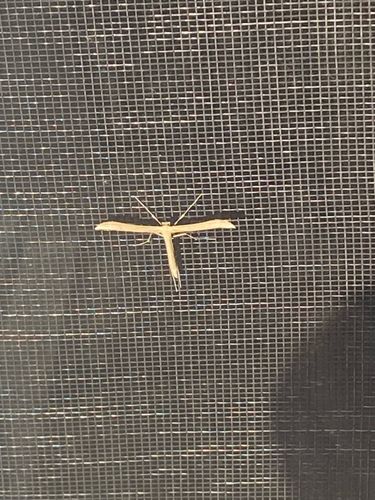Plume Moth
Scientific Name: Pterophoridae (Family)
Order & Family: Lepidoptera (Order), Pterophoridae (Family)
Size: Wingspan typically ranges from 15 mm to 40 mm (0.6 to 1.6 inches). Their bodies are slender, usually measuring around 10-20 mm (0.4 to 0.8 inches) in length.

Natural Habitat
Plume moths are found in a variety of habitats where their host plants grow, including gardens, fields, meadows, forests edges, and urban areas. They are common worldwide, adapting to diverse climates from temperate to tropical regions.
Diet & Feeding
Adult plume moths generally feed on nectar. Their larvae (caterpillars) are typically herbivorous, specializing in feeding on specific host plants. The diet varies greatly by species, but common hosts include plants from the Asteraceae (daisy family), Lamiaceae (mint family), and Solanaceae (nightshade family).
Behavior Patterns
Plume moths are primarily nocturnal, attracted to lights at night. Their distinctive T-shaped resting posture makes them easily identifiable. Larvae typically feed internally on plant tissues, often acting as leaf miners, stem borers, or flower feeders, depending on the species. The adult lifespan is generally short.
Risks & Benefits
Potential risks include some species being considered agricultural pests, as their larvae can damage crops like artichokes, sunflowers, and tobacco. Benefits include their role as pollinators, though typically minor compared to bees and butterflies, and as part of the food chain, serving as food for birds and beneficial insects.
Identified on: 8/28/2025